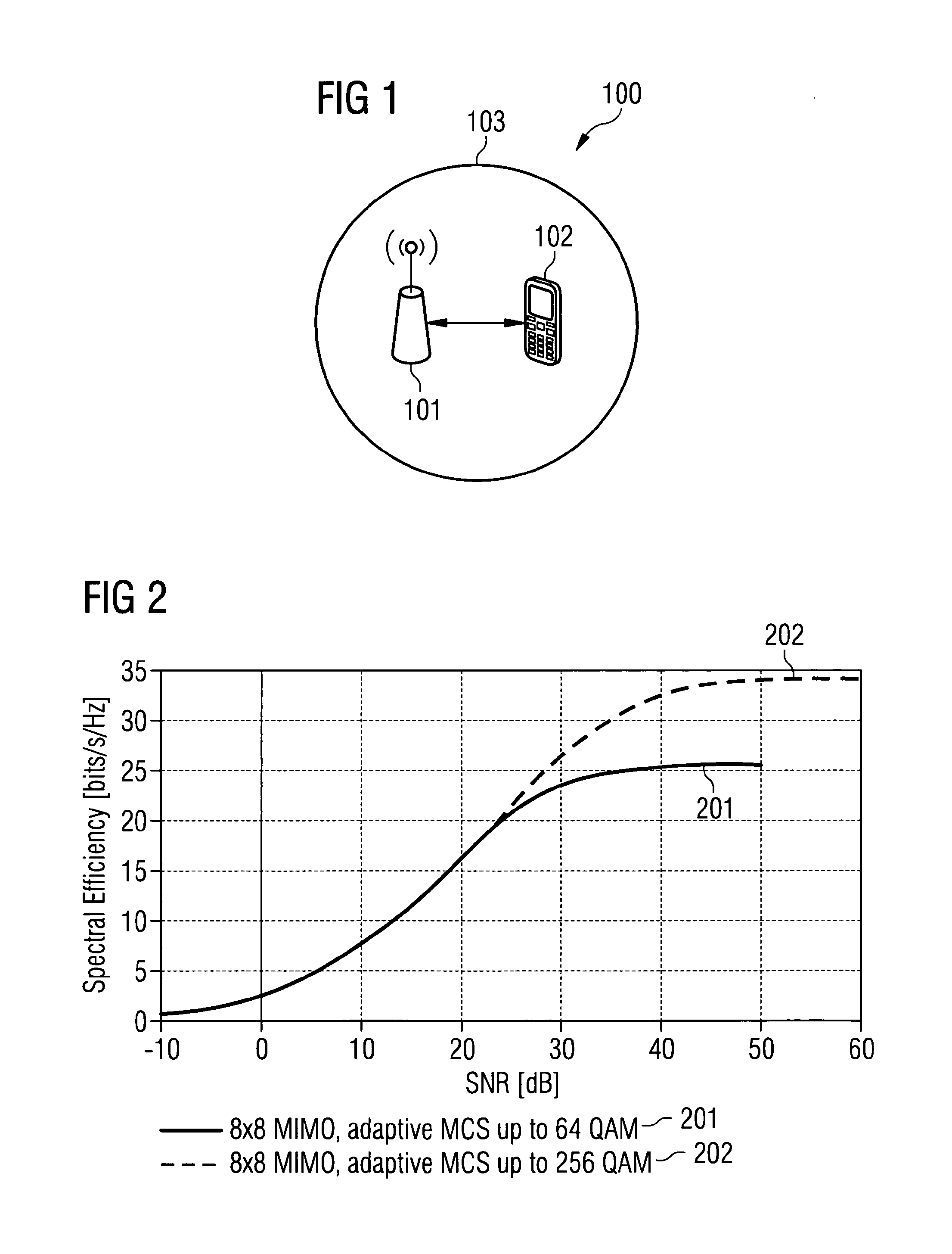Controlling a Modulation and Coding Scheme for a Transmission Between a Base Station and a User Equipment
- Summary
- Abstract
- Description
- Claims
- Application Information
AI Technical Summary
Benefits of technology
Problems solved by technology
Method used
Image
Examples
Embodiment Construction
[0064]In the following, embodiments of the herein disclosed subject matter are illustrated with reference to the drawings and reference to aspects of current standards, such as LTE, and their further developments. However, such reference to current standards is only exemplary and should not be considered as limiting the scope of the claims.
[0065]FIG. 1 shows a cellular network system 100. A user equipment 102 is served by a first cell 103 of the cellular network system. The first cell is assigned to a base station 101.
[0066]The transmission and communication between the base station and the user equipment is controlled based on a modulation and coding scheme. The modulation and coding scheme is selectable based on a first modulation and coding scheme table comprising entries corresponding to a plurality of modulation and coding schemes with a first maximum modulation order or based on a second modulation and coding scheme table comprising entries corresponding to a plurality of modu...
PUM
 Login to View More
Login to View More Abstract
Description
Claims
Application Information
 Login to View More
Login to View More - R&D
- Intellectual Property
- Life Sciences
- Materials
- Tech Scout
- Unparalleled Data Quality
- Higher Quality Content
- 60% Fewer Hallucinations
Browse by: Latest US Patents, China's latest patents, Technical Efficacy Thesaurus, Application Domain, Technology Topic, Popular Technical Reports.
© 2025 PatSnap. All rights reserved.Legal|Privacy policy|Modern Slavery Act Transparency Statement|Sitemap|About US| Contact US: help@patsnap.com



